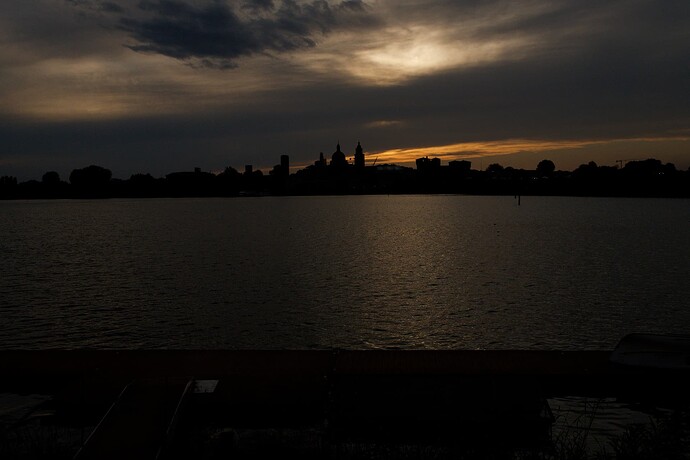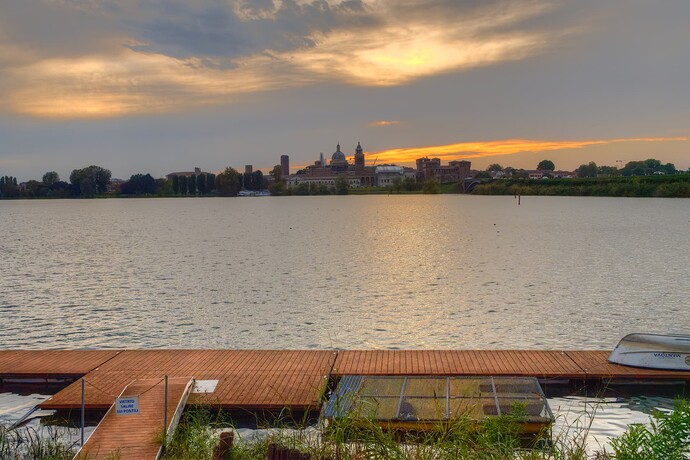You are right in thinking of f/5 for the absolute optimum aperture, avoiding diffraction, but… that then limits the available depth of field. Which is why I tend to use f/10, which seems to work as an ideal compromise.
The idea that optimum aperture depends on sensor size is actually an outdated concept and derives from calculating pixel pitch from that size, usually based on 30µm (for full frame) or 30µm (for APS-C) circle of confusion. But both these are based more on film grain size rather than pixel pitch.
Now diffraction on a sensor is dependent on pixel pitch, so whether it is with an APS-C or a full frame sensor, there can be no, or little, difference. The Sony A6700 has a pitch of just under 4µm and my Nikon D850 has a pitch of just over 4µm - so, virtually the same.
With Mike’s image, the focusing distance is recorded in the Exif as 13.65m. So, at f/5, that gives a DoF of 109.8m, from 7.26m to 117m - not enough to reach the horizon without incurring some diffraction.
Whereas, allowing for minor diffraction, using f/10 gives a hyperfocal distance of 3.88m and a DoF from 1.94m to infinity.
I would argue that, since the buildings on the far shore are more important, it is better to go for hyperfocal distance focusing than using the auto-focus.
According to Google Maps, the distance from your viewing point to the palace is around 800m, so DoF is always going to be enormous with a 24mm focal length and, frankly, f/10 or f/5 is fairly irrelevant 
Ahah! the old “hit and hope” school of metering 
By far the better. The first thing I do with any camera is to run a series of tests to determine how much above 0EV I can expose without losing highlight detail. With my Nikon D850, that works out at an absoute +3EV or a more realistic +2EV for a white highlight - +1EV for a cream highlight. In this image, I would have placed the veiled sun at +2EV.
Now, the Sony A6700 claims a dynamic range of 14 stops, but that is at 100 ISO. I can’t find the DxOMark chart for the Sony but, for my Nikon, at 640 ISO, it drops by 2 stops.
@Mike_Murphy_1948, no matter how you arrived at it, your OOC exposure is as good as it’s going to get. Well done!
In principal, my method for this kind of shot would have been to…
- set metering to manual
- turn off the exposure compensation
- set the aperture to f/10
- set the shutter speed to as near to 1/100sec as you can manage
- set the ISO to 100
- spot read for the brightest part of the sky on the +2EV marker on the meter scale
- juggle the ISO and speed to avoid camera shake.
Here’s a screenshot of a crop of your image, at 400%, showing the detail on the far shore, exported with DeepPRIME…
Not bad at all 













